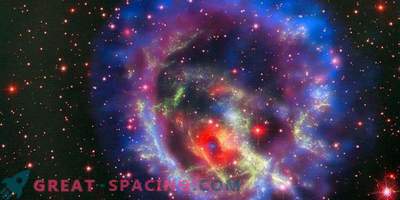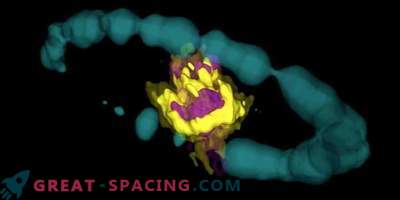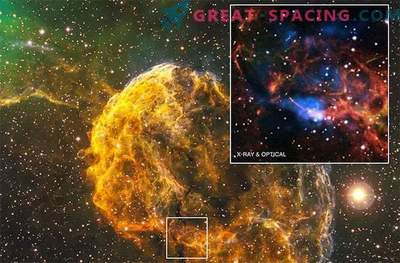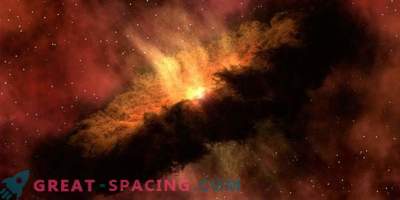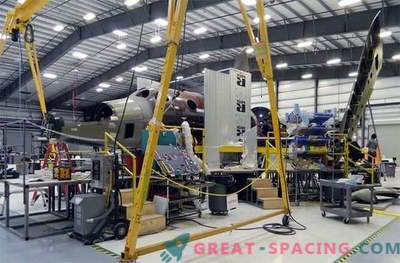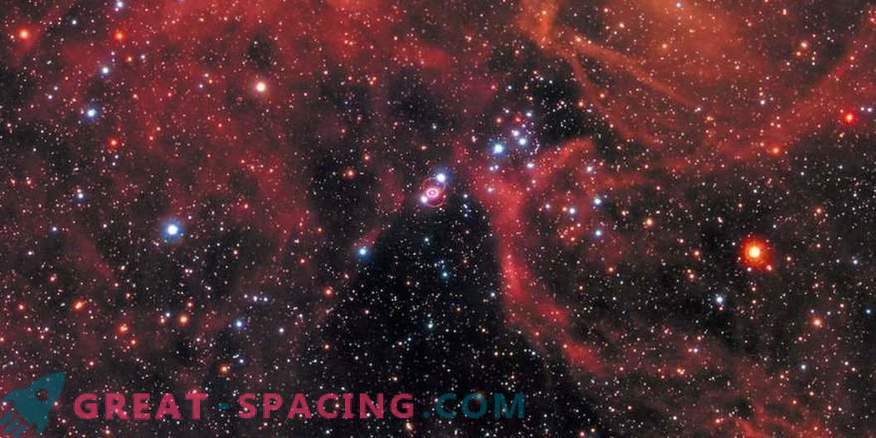
The Hubble Space Telescope demonstrates a bright supernova explosion 1987a in the Large Magellanic Cloud (Milky Way galactic neighbor)
On February 23, 1987, the light of a giant exploding star reached Earth. The event took place on the territory of the Large Magellan Cloud, a small galaxy 168000 light-years away from the Milky Way. It became the closest supernova for nearly 400 years since its first review in modern-day telescopes.
After 30 years, researchers for the first time used X-ray visibility and physical modeling to accurately determine the temperature of elements in a gas around a dead star. Since ultrafast shock waves from the heart of a supernova star crash into atoms in the surrounding gas, they heat these atoms to hundreds of millions of degrees Fahrenheit.
Exit with a big bang
When a giant star is aging, the outer layers merge and cool in the form of large-scale residual structures around the star. The stellar core forms an amazing supernova explosion, after which a superdense neutron star or black hole remains. Shock blast waves propagate at 1/10 the speed of light and end up in the surrounding gas, which heats up and shines in bright x-rays.
NASA's Chandra Space Observatory has been following the emission of supernova 1987a since the launch of the telescope 20 years ago. The supernova was then very surprised, because it managed to fix a series of three rings around it. It turns out that since 1997, the supernova 1987a has been in contact with the innermost (equatorial) ring. With the help of the Chandra telescope, scientists studied the light created by shock waves when they interacted with the equatorial ring. The team wanted to know how the gas and dust in the ring were heated. They also wanted to determine the temperature of the various elements in the material.
To assist in the measurements, the researchers studied detailed 3D computer simulations of a supernova, which made it possible to determine the velocity of the shock wave, the gas temperature, and the resolution limits of the instruments. After it turned out to find out the temperature of a wide range of elements, such as light (nitrogen and oxygen) and heavy (silicon and iron) atoms. Temperature indicators ranged from millions to hundreds of millions of degrees.
The collected information provides important information about supernova dynamics 1987a and helps test models of a particular type of shock front. Since the charged particles from the explosion do not hit the atoms in the surrounding gas, but scatter them using electric and magnetic fields, such an event is called a collision-free impact.
This process is common throughout space. Therefore, a better understanding of the situation will improve the study of other phenomena, such as the contact of the solar wind with interstellar material and cosmological modeling of the formation of large-scale structures in the Universe.
